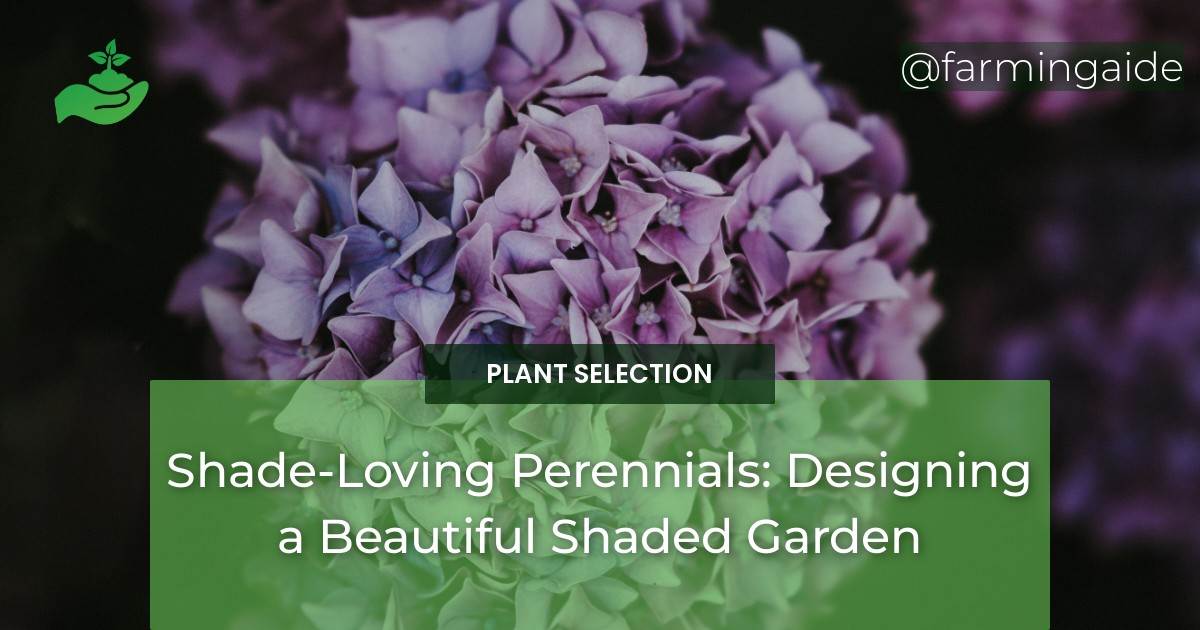Designing a beautiful shaded garden can be a challenging task, but with the right selection of shade-loving perennials, it can be a rewarding one. Shade-loving perennials are plants that can thrive in areas with limited or no direct sunlight. They come in a wide variety of sizes, shapes, and colors, making it easy to create a stunning garden even in the shade. In this article, we will discuss tips for selecting, planting, and maintaining shade-loving perennials to help you design a beautiful shaded garden.
Table of Contents
Tips for selecting shade-loving perennials
Consider the level of shade
Before selecting shade-loving perennials, it is essential to determine the level of shade in your garden. There are three categories of shade: light shade, partial shade, and full shade. Light shade is an area that receives filtered light for most of the day, while partial shade receives direct sunlight for only a few hours. Full shade is an area that receives no direct sunlight. Once you have determined the level of shade in your garden, you can choose plants that will thrive in those conditions.
Look for plants with specific shade requirements
Shade-loving perennials have varying shade requirements. Some plants can thrive in full shade, while others need partial shade or light shade. Therefore, it is essential to choose plants that match the level of shade in your garden. Some popular shade-loving perennials include:
- Hosta
- Astilbe
- Bleeding heart
- Ferns
- Coral bells
Choose a variety of plants with different bloom times
Avoid having a garden that looks dull or uninteresting by selecting shade-loving perennials with different bloom times. This way, there will always be something blooming in your garden, and you will have a continuous display of color. For example, lungwort blooms early in the spring, while coral bells bloom in the summer.
Consider the foliage texture and color
In addition to the bloom time, it is important to consider the foliage texture and color of shade-loving perennials. The foliage of these plants is just as important as their flowers since they are visible throughout the growing season. Therefore, choose plants with textures and colors that complement each other to create a well-balanced and visually appealing garden.
Planting shade-loving perennials
Prepare the soil properly
The key to growing healthy shade-loving perennials is to prepare the soil properly. This involves mixing in organic matter such as compost or aged manure to improve the soil structure and provide nutrients to the plants. In addition, make sure the soil is well-draining since shade-loving perennials do not like to sit in wet soil.
Plant at the right time
Planting shade-loving perennials at the right time is crucial to their success. Ideally, plant them in the spring or fall when the temperatures are cooler. This will allow the plants to establish their roots before the hot summer weather arrives.
Provide adequate water and nutrients
Shade-loving perennials require adequate water and nutrients to thrive. Water them deeply once a week, making sure the soil is moist but not waterlogged. In addition, fertilize them in the spring with a slow-release fertilizer to provide the necessary nutrients.
ALSO READ
Maintaining shade-loving perennials
Mulch regularly
Mulching is an essential part of maintaining shade-loving perennials. It helps to retain moisture in the soil, suppress weeds, and regulate soil temperature. Apply a two to three-inch layer of organic mulch such as shredded leaves or bark around the base of the plants, making sure not to cover the stems.
Deadhead spent blooms
Deadheading spent blooms is another important part of maintaining shade-loving perennials. This involves removing the faded or dead flowers to encourage the plants to produce more blooms and prevent them from going to seed. Use clean and sharp pruners to make clean cuts just above a leaf node.
Divide plants as needed
Shade-loving perennials can become overcrowded over time, affecting their growth and bloom production. Therefore, it is essential to divide them every three to five years to maintain their health and vigor. Divide the plants in the spring or fall when the temperatures are cooler and the plants are not actively growing.
Watch for pests and diseases
Shade-loving perennials are susceptible to pests and diseases such as slugs and powdery mildew. Therefore, it is important to keep an eye out for any signs of problems and take immediate action to prevent them from spreading. Use organic methods such as handpicking or spraying with insecticidal soap to control pests and diseases.
Conclusion
Designing a beautiful shaded garden is possible with the right selection of shade-loving perennials. Remember to consider the level of shade, look for plants with specific shade requirements, choose a variety of plants with different bloom times, and consider the foliage texture and color when selecting shade-loving perennials. Proper planting, watering, and maintenance are also crucial to their success. By following the tips outlined in this article, you can create a stunning garden that thrives even in the shade.


